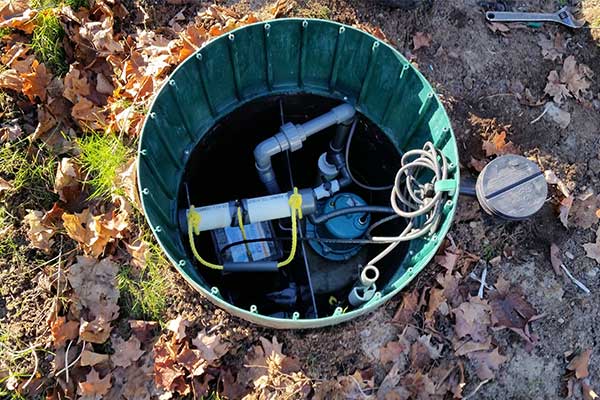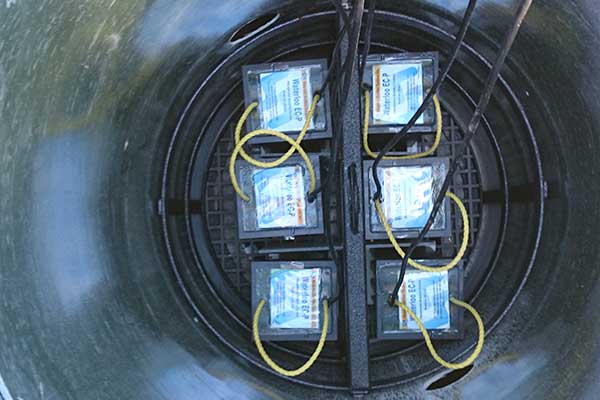Protect Lakes From Algae Blooms
Permanently remove phosphorus without requiring subsequent treatment or affecting wastewater pH
Excess phosphorus in freshwater lakes can:

Limit Recreation
Activities

Lower Property
Values

Reduce Fish
Populations

Be Fatal to Pets
The Waterloo EC-P removes phosphorus from septic systems before it has a chance to enter surface or groundwaters.

The Phosphorus
Problem
In most freshwater lakes the limiting nutrient for algal growth is phosphorus. When excess phosphorus enters a lake ecosystem the result can be algae blooms. Not only can this excess algal growth be a nuisance, interfering with human activities such as swimming, boating, and fishing, but some forms of blue-green algae or cyanobacteria produce toxins that are harmful to humans and wildlife. Furthermore, when algae blooms die they sink to the bottom of the lake and decay, using up precious oxygen that fish and other aquatic organisms need to survive and contributing to lake eutrophication.
Phosphorus is one of the nutrients naturally found in human wastewaters. Septic systems located near lakeshores and tributaries can be a significant source of phosphorus loading to our lakes.


The Waterloo Advantage


Low Energy
While electrochemistry sounds like an energy intensive process, the Waterloo EC-P actually uses little energy – less than $50/year.

Environmentally Friendly
The Waterloo EC-P removes phosphorus from wastewater using iron – an element commonly found naturally occurring in many soils.

No Chemical Addition
The Waterloo EC-P system does not require any chemicals – eliminating their costly and sometimes hazardous transportation, storage, dosing and replacement.

Permanent Removal
Most phosphorus removal strategies use coagulation and flocculation to create a phosphorus-rich sludge that is pumped out and must be further treated at municipal wastewater treatment plants. The Waterloo EC-P does not increase sludge production and permanently removes phosphorus without requiring subsequent treatment.
The Waterloo Process
The Waterloo EC-P™ (patent-pending) is a cost effective process for permanently removing phosphorus from septic systems. The Waterloo EC-P mimics the natural phosphorus removal capabilities of iron-rich ‘B-horizon’ soils by electrochemically dissolving natural iron into wastewater. This process transforms the soluble reactive phosphorus found in wastewater into insoluble iron-phosphate minerals that are highly stable in both aerobic and anoxic environments – this means the phosphorus is ‘locked up’ and unavailable for use by algae. These iron-phosphate minerals are filtered out and precipitate on either the Waterloo Biofilter foam filter media, or the sand or soil found in conventional septic system leaching fields.
Products
Waterloo has a residential and commercial configuration to meet your needs.
Operation & Maintenance

Regular maintenance of your Waterloo Biofilter system is important to protect the environment and the value of your investment.
Proper operation and maintenance of any type of septic system has a significant impact on how well it works and how long it lasts. The Waterloo EC-P is often required by regulations to have a valid annual maintenance contract in place. Maintenance is performed by trained and authorized personnel.
For a typical residence the electrodes have a lifespan of 2-3 years before they will require replacement. For seasonal properties the lifespan can often be doubled.
With few moving parts and only high quality components used, maintenance on the Waterloo EC-P system can be completed quickly and easily.



